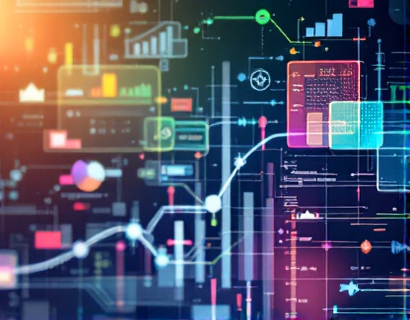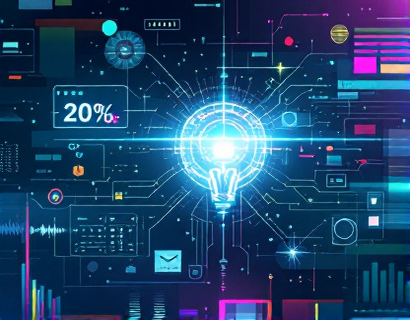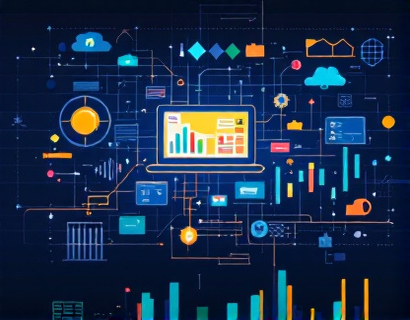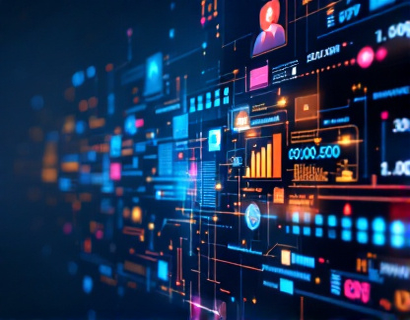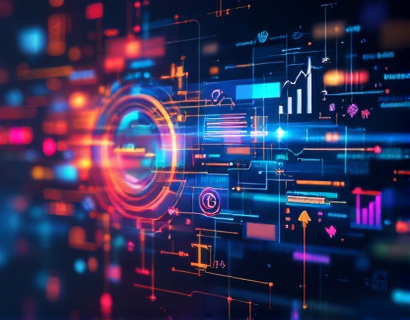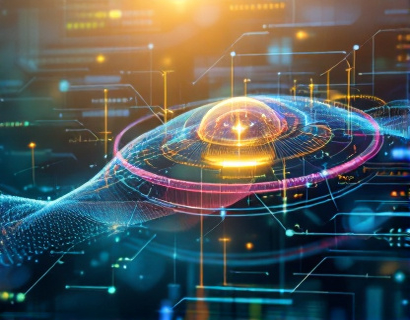Crypto-Driven AI: Revolutionizing Digital Productivity with Next-Gen Tech Solutions
The intersection of artificial intelligence (AI) and cryptocurrency is giving birth to a new era of digital productivity. This fusion is not just a technological curiosity but a transformative force that is redefining how we approach daily tasks and workflow management. For tech pioneers and early adopters, this convergence offers a glimpse into a future where efficiency and innovation go hand in hand. This article delves into the intricacies of crypto-driven AI and its potential to revolutionize digital productivity, providing insights and examples that highlight the next generation of tech solutions.
Understanding the Basics: AI and Cryptocurrency
To fully appreciate the impact of crypto-driven AI, it's essential to understand the fundamental concepts of both AI and cryptocurrency. Artificial intelligence, a branch of computer science, focuses on creating systems that can perform tasks requiring human intelligence, such as learning, reasoning, and problem-solving. AI technologies include machine learning, natural language processing, and computer vision, each contributing to the development of smart, autonomous systems.
Cryptocurrency, on the other hand, is a digital or virtual currency that uses cryptography for security. The most well-known cryptocurrency is Bitcoin, but the concept has expanded to include thousands of alternative coins (altcoins) and tokens. Cryptocurrencies operate on decentralized networks, typically blockchain, which ensures transparency, security, and immutability. This decentralized nature eliminates the need for intermediaries, reducing transaction costs and increasing efficiency.
Synergy of AI and Cryptocurrency
The combination of AI and cryptocurrency creates a powerful synergy that enhances digital productivity. AI can leverage the computational power and decentralized nature of blockchain to perform complex tasks more efficiently and securely. For instance, AI algorithms can be deployed on blockchain networks to process and analyze vast amounts of data without the risk of data breaches or manipulation. This synergy is particularly beneficial in industries that require high levels of data integrity and security, such as finance, healthcare, and supply chain management.
Enhancing Workflow with AI-Driven Tools
One of the most immediate benefits of crypto-driven AI is the enhancement of workflow through advanced tools and applications. These tools can automate repetitive tasks, provide intelligent insights, and optimize resource allocation. For example, AI-powered virtual assistants can manage schedules, prioritize tasks, and even predict potential bottlenecks in the workflow. By integrating blockchain, these assistants can ensure that all data and transactions are secure and transparent, building trust and reliability.
Consider a scenario in a corporate environment where employees use an AI-driven platform to manage project tasks. This platform uses machine learning to analyze past project data and predict the most efficient allocation of resources. Transactions related to task assignments, payments, and deliverables are recorded on a blockchain, ensuring that all parties have a tamper-proof record. This not only streamlines the workflow but also reduces the risk of errors and fraud.
Smart Contracts: Automating Agreements
Smart contracts are a prime example of how AI and cryptocurrency can transform traditional processes. A smart contract is a self-executing contract with the terms of the agreement directly written into code. When the predefined conditions are met, the contract automatically executes the agreed-upon actions. This eliminates the need for intermediaries, reducing costs and increasing speed.
In the context of digital productivity, smart contracts can automate various aspects of business operations. For instance, in a supply chain, a smart contract can ensure that payment is released to a supplier once the goods are delivered and verified by a blockchain-based sensor. The AI component can monitor the entire process, from production to delivery, providing real-time insights and alerts. This level of automation and transparency can significantly enhance efficiency and trust among all parties involved.
Decentralized Data Marketplaces
Another innovative application of crypto-driven AI is the creation of decentralized data marketplaces. These platforms allow users to buy, sell, and share data securely and privately. AI algorithms can process and analyze the data, providing valuable insights to businesses and researchers. The decentralized nature of these marketplaces ensures that data ownership remains with the users, and they are compensated fairly for their contributions.
For example, a decentralized data marketplace could enable healthcare providers to share patient data (with consent) for research purposes. AI algorithms can analyze this data to identify patterns and trends, leading to breakthroughs in medical research. The providers are rewarded with cryptocurrency, creating a win-win situation. This approach not only accelerates research but also ensures that data is used ethically and transparently.
Enhancing Cybersecurity with AI and Blockchain
Cybersecurity is a critical concern in the digital age, and the integration of AI and blockchain offers robust solutions. AI can detect and respond to threats in real-time, while blockchain provides a secure and immutable record of all transactions and activities. This combination creates a multi-layered defense mechanism that is highly effective against cyberattacks.
AI-driven security systems can monitor network traffic, identify anomalies, and predict potential threats based on historical data. Blockchain can store logs of all security events, ensuring that there is a transparent and tamper-proof record. This not only helps in quick response to incidents but also aids in post-incident analysis and prevention of future attacks. For businesses, this means a significant reduction in the risk of data breaches and financial losses.
Challenges and Considerations
While the potential of crypto-driven AI is immense, there are several challenges and considerations that need to be addressed. One of the primary challenges is the technical complexity involved in integrating AI and blockchain technologies. Developers and organizations must have a solid understanding of both domains to create effective solutions. Additionally, the scalability of blockchain networks remains a concern, as they can struggle to handle high volumes of transactions.
Another consideration is the regulatory landscape. The use of cryptocurrency and blockchain is still evolving, and regulations vary widely across different regions. Organizations must navigate these regulations carefully to ensure compliance and avoid legal issues. Moreover, the environmental impact of cryptocurrency mining, particularly Proof of Work (PoW) systems, is a growing concern. Transitioning to more sustainable consensus mechanisms, such as Proof of Stake (PoS), can help mitigate this issue.
Future Prospects: The Next Evolution in Digital Productivity
The future of digital productivity is increasingly intertwined with AI and cryptocurrency. As these technologies continue to mature, we can expect even more innovative applications and solutions. One area of focus will be the development of decentralized AI models, where AI algorithms are trained and run on a distributed network, enhancing privacy and reducing the risk of data centralization.
Another exciting prospect is the integration of AI with other emerging technologies, such as the Internet of Things (IoT) and 5G networks. This convergence can lead to smarter, more connected environments where devices and systems work seamlessly together, driven by intelligent, data-driven decisions. For instance, smart cities can use AI to optimize traffic flow, energy consumption, and public services, all supported by a blockchain-based infrastructure for secure and transparent operations.
For tech pioneers and early adopters, embracing crypto-driven AI is not just about staying ahead of the curve; it's about being part of a transformative movement that is reshaping the digital landscape. By leveraging these advanced technologies, individuals and organizations can unlock new levels of productivity, innovation, and efficiency. The journey ahead is promising, and those who embrace it will be at the forefront of the next digital revolution.





